Adaptability
May 30, 2008
Article written by Gerard Maccreanor
"If one want to express something abstract, something that doesn't immediately relate to the visible reality, the best thing is to relate to the immediate surroundings. Then it stays clear and things never become easily vague" (1)
We are all familiar with historical examples, such as the Amsterdam canal houses or London Georgian town houses, that have undergone many changes from single family dwellings to apartments and offices. Even hotel, night-club, art gallery shopping and light industrial uses have been found for these buildings. More recently, industrial warehouse buildings dating from the late 19th and early 20th century have also found new uses. It is the adaptability of these buildings that creates a vibrant urban structure: ever changing and lively, with different parts of the city developing different characters and generating new forms of urban contact and sociability.
Adaptability is a different way of viewing flexibility. The adaptable building is both transfunctional and multifunctional and must allow the possibility of changing use; living into working, working into leisure or as a container of several uses simultaneously. Adaptability is not primarily concerned with a designed idea of flexibility based on the collapse of the traditional layout. An apparent robust identity and enduring presence within an urban context is required that allows the building to cope with future needs and changing conditions.
Flexibility has for a long time been a subject of interest for architects. In 1923 Le Corbusier published Vers une architecture that included ideas on mass produced and flexible housing based on the Dom-ino system that he developed in 1914. This text is still perhaps the single most influential architectural manifesto of early modern times. The dom-ino system proposed an open plan with ribbon windows that provided endless flexibility in the arrangement of the interiors. In the years to follow this resulted in many buildings with open, changeable planning around fixed service cores .This greater spatial indeterminacy was thought to allow greater changes in use and occupancy.
Our experience now shows that the potential of this flexibility was rarely used to its full extent. A lack of technical expertise with new materials often resulted in building facades that did not last and failed to meet ever increasing energy requirements. Buildings that were designed to be flexible in their internal arrangements had minimum floor to ceiling heights, making them difficult to adapt to future uses. It was often more cost efficient to built new accommodation rather than to renovate or rearrange the existing.
One conclusion is that flexibility doesn't simply imply the necessity of endless change and breakdown of accepted formula. On the contrary, the buildings that have proven to be the most adaptable, were those not originally planned for flexibility.
Generators of adaptability
Over-dimensioning
Adaptable buildings achieve long life through a loose fit ideal. The overdimensioning of ceiling heights, circulation space, mechanical services and the exceedance of present energy requirements can encourage the prospect of future adaptability. The increasing demands of cost efficiency no longer permits this generosity. Overdimensioning therefore implies a change in the now common practice of strictly defining a building programme.
A design based on volume rather than area should be proposed. An interesting example of a designed “adaptable” building is the Zomerdijkstraat atelier apartments; Amsterdam 1934; Zandstra, Giesen and Sijmons. A particular section provides a large studio space with several smaller spaces attached. These form the support areas of each dwelling; the bedrooms, kitchen and bathroom.
However much the building is designed to closely fit the programme, it is the introduction of the oversized space that has ensured its continued use. The building has an ambiguous image that is neither industrial nor residential and results from the very different elevations. There are large areas of industrial glazing on the studio side of the building and small windows and balconies on the support side. It is a highly inventive approach within the language of the “ordinary” and has a neutrality which contributes to the building's adaptability.
Neutral facades
Neutrality proposes facades that have no symbolic indication of a particular use, yet they are capable of strongly suggesting activity. The importance of the “inhabited window”, expressing a sense of individuality was shown in the study of the contemporary use of old Viennese housing, by Diener and Diener.
Neutrality should not be confused with standardisation and repetitive dullness. Neutral architecture doesn't rely on the big gesture but rather seeks for a building to fit quietly into its surroundings almost as if the simple fact of being there is enough. This implies a conscious decision against frivolous decoration, drama and extravagance.
Contextualism
The adaptable building, capable of coping with changing use and a changing urban context, is primarily concerned with the quality of urbanism.
The building functions as a part of the city-backdrop. The urban setting being more important than the image of the building as an exclusive object.
"The relatively inconspicuous built edifice is born from an attitude that understands it as just another element in a broader context, even to the extent of allowing it to both exist as an independant, coherent statement while also sharing the formal and spatial sensibilities of its neighbours and predecessors, however banal these may be" (2)
Contextualism should not however, be confused with a simplistic interpretation that implies reproduction in the name of the local vernacular. It is the idea of a context that can allow for an emphasis on particular characteristics that are part of our collective memory and at the same time different and unknown.
Ordinariness
A proposed contextual approach is closely intertwined with a fascination for the ordinary and everyday. Ordinary architecture is storytelling about the roots and conditions of the landscape, and conversely each landscape generates its own specific anonymity.
The power of the ordinary is that when you look long enough, almost everything begins to display its own particular “specialness”. Finding the “specialness” in the ordinary, will increase any potential for adaptability.
The inherent contradiction in “everydayness” is that things seem fixed and repetitive, yet everything changes and even this change is programmed. Using this potential for inventiveness within the ordinary a building can become timeless and therefore genuinely “up to date”.
Address
The adaptable building has an address. Address asks for a clear distinction to be made between private and public, avoiding the confusion of semi-public or semi-private space. The facade can act as a strict boundary between internal and external activities with the entrance directly related to the urban space. The building therefore becomes street conscious and recognises the importance of the street as a public space. The emphasis is on vertical, rather than horizontal circulation, eluding forced meeting spaces and inviting communal activities to take place within the realm of the street. On an urban level, the notion of address can be further extended by the creation of clearly defined streets, squares, and borders.
Timelessness
Ordinary buildings, designed for living or working, don't require a revolutionary concept, but rather accept the slow pace at which ordinary activities evolve. Such architecture should attempt neither nostalgic repetition nor extravagant invention, but must use a language that talks about a shared experience, a shared memory and an “ordinariness”. A form cannot be immediately traced, but can provoke the thought “this I have seen before”. An expression of this quiet understanding makes the building independant of fashion. It doesn't wear, it lasts. It is this enduring presence that invites for a powerful engagement with the building, an endearing quality that seduces people into adapting themselves to it.
Timelessness promises the return of a reality that was itself an abstract ideal. Timelessness and nostalgia are therefore inevitably connected. In these terms nostalgia is a difficult word to link to architecture, signalling a negative retreat from the present and implying a meaningless adoption of seemingly “complete” images from past architecture's. The emotive power of nostalgia lies not in the desire to physically reinvent something lost, but in the way idealised and fragmentary images of the past are sometimes summoned unexpectedly into the context of a very different present. It is the simultaneous and contradictory awareness of past and present which is of importance.
Materials and detail
The material quality of the building is essential for establishing the desired sense of timelessness and robust identity. To meet these ambitions, materials should allow the building to weather beautifully and grow old gracefully. A sense of detail implies a cared for building. An accepted architectural view is to consider detail as an obsolete irrelevancy that distracts from the overall concept. On the contrary, it is the cared for, finely detailed building that manages to retain its value.
Irrationality
Buildings are rendered more approachable by any apparent incorrectness, lack of precision or irrational intervention. Historically, this happened either through the imperfections and nuances of individual craftsmen or because adjustments weremade as a result of imprecise building information. This is not a plee to bringback craftsmanship or out of date working methods, but a realisation thatthe appearance of incorrectness has to be found within the rationality of the programme, construction and context. In an article on La Tourette –Le Corbusier 1960– Hans de Soeten outlines the exceptions to consistently applied design principles that give La Tourette a special quality.
“The rationality of the building is disturbed at those places where the ordering principles, structural clarity,functional use of space and architectural image, conflict with each other. What is illogical in plan appears natural in practice and results from one principle becoming dominant” (3)
This confusion in an otherwise harmonious meeting of structure, use and architecture can be viewed as a conscious decision to place the requirements of context and spatial awareness above the desire to create a perfect object. Such deviations allow a sense of rawness to be retained in the midst of rigidly controlled environments, a personalization that in turn creates a recognisable identity.
Article published in a+t 12. Housing and Flexibility I.
Notes
(1) K. Schippers, quote from “Van Gogh-lecture” on the pointillistic masterpieces of George Seurat. May, 1998.
(2) Wilfried Wang. From Normality to Abstraction. Catalogue on the exhibition From City to Detail, on the work of Diener & Diener Architects. London, 1995
(3) Article by Hans de Soeten, on La Tourette+Le Corbusier. Hans de Soeten, Thijs Edelkoort. Delft University Press. 1995.


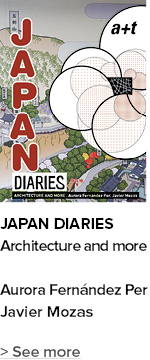




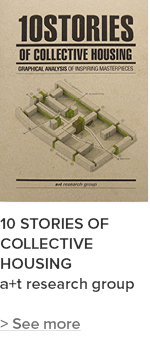

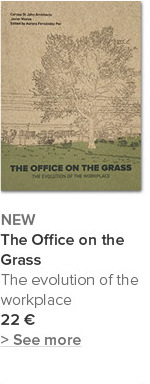

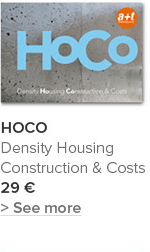

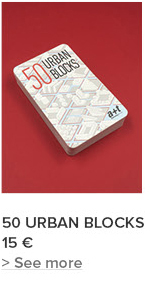
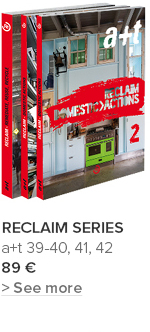

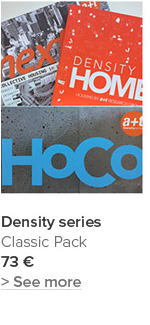





 I've read and agree to
I've read and agree to 


